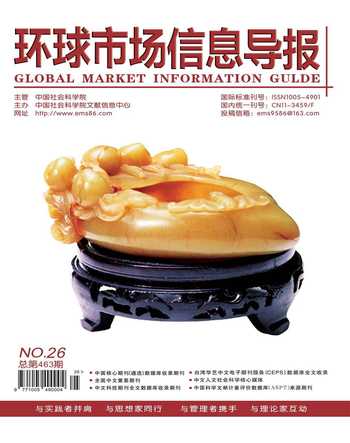The Impact of FDI on China
Thip Koo-akarakul
In1978, China started an economic reform. The promotion of foreign direct investment (FDI) inflow is an important part of the economic reform process. After more than 30 years of economic reform, China has become one of the most important destinations for FDI.
FDI has been at the core of Chinas foreign trade expansion. In recent years, foreign-invested firms have become a very important part of the Chinese economy. Foreign capital has played a largely positive role in Chinas economic development during the reform. China has also achieved economic growth at an impressive speed. We will assess the impact of FDI in Chinas economic.
The impact of FDI inflows on Domestic Economy
FDI is an important element in Chinas reform and economic growth. FDI increase from a very level in the late 1970s to more than US$ 40 billion a year the in the late 1990s. FDI and FIEs formed an important element in Chinas economic growth in both the national level as well as regional level.
China has succeeded in attracting tremendous FDIs, and foreign firms are the most important part of this for the Chinese economy. FDI flows to China have contributed to GDP growth in several ways: one is that FDI has raised GDP growth by adding to capital formation; another is FDI has contributed to higher GDP growth through its positive effect on total factor productivity. In addition, FDI has contributed to GDP growth directly through the establishment of FIEs and indirectly by creating positive spillover effects from FIEs to domestic enterprises.
FDIs are now major players in Chinas international trade. This situation is the result of Chinas policy towards FDI which has strongly encouraged export-oriented activities. The growth of Chinas trade has been four and a half times that of world trade and Chinas share of world trade quadrupled form 0.9 percent in 1978 to 3.7 percent in 2000. (Lardy, 2000)
In short, FDI has a positive and significant impact on provincial export performance. It can be further pointed out that FIEs played a key role in this achievement. Between 1985 and 1999, the share of exported accounted for by FIEs grew from 1 percent to 45 percent. FIEs accounted for half of overall export growth and one-third of import growth during this period. (Tseng and Zebregs, 2002)
The impact of FDI on employment opportunities
Without question, FDI has created large number of job opportunities through the FIEs. It increased the employment rate in China.
The FDI firms urban employment was particularly concentrated in the eastern region provinces (85.76% of the total) and more particularly in Guangdong, Fujian, Jiangsu, Shandong, Liaoning and Zhejiang, and some capital city, like Shanghai, Beijing and Tianjin. In contrast, FDI firms urban employment in the central and the western regions made up for only 11.15% and 3.09% of FDI firms total urban employment in China, respectively. This suggests that FDI may have contributed to widening the income gap between the eastern and western regions of China. (Banerjee, 2006)
The impact of FDI on Technology Transformation
The coming of FDI has brought about severe market competition which forces domestic companies to perform technological reform to improve productive efficiency. As a result the investment of domestic companies has been increasing.
The research and development activities performed by the foreign-invested companies have enhanced the technological spillover effects. Domestic companies may have increased the investments in research and development activities in order to gain competitive advantages.
However, some surveys indicated that technology transfer from FDI was relative low, even though the Chinese government regarded FDI as a way of technology transformation. There were some reasons why the technology transformation from FDI is low. First, many investors were not genuine sources of technology. Second, local partners had distorted motives and restricted absorptive capabilities. Third, moderate technology gap, an incomplete technology package and the dominant inflow of hardware hamper advanced technology transfer.
From Chinas experience, FDI contributes importantly to economic development. According to some researches, Chinas FDI have raised the GDP growth by adding to capital formation, increasing in total factor productivity, and establishing Foreign-funded enterprises (FFEs). Second, it played a major role in increasing Chinas export, which directly results in the huge trade surplus of China and US, EU, and other countries. Third, it created a large number of job opportunities through FIEs, but it also widened the income gap between eastern and western China.
References
[1]Cheung,K.Y., Lin, P.(2003).“Spillover effects of FDI on innovation in China: Evidence from the provincial data” Elsevier Inc.
[2]Dang, X.B.(2008).“Foreign Direct Investment in China”. Kansas State University.
[3]Fung,K.C., Iizaka H.,Tong, S.(2002).“Foreign Direct Investment in China: Policy, Trend and Impact”Paper prepared for an international conference on Chinas Economy in the 21st Century, Hong Kong.
[4]OECD Co-operation Programme.(2000).“Main Deternimnants and Impacts of Foreign Direct Investment on Chinas Economy” Working Papers on International Investment Number 2000/4.
[5]Mablu, M.(2010).“Impact of FDI in Economic Growth of China”[Online]Available at:http://www.bukisa.com/articles/353448 _impact-of-fdi-in-economic-growth-of-china#ixzz1a6vrwEC0(Accessed:3 October 2011)

